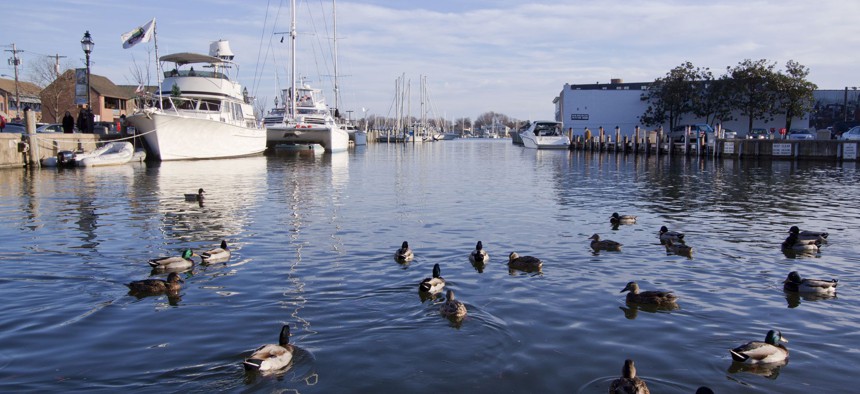Aerial Survey Finds Underwater Grass Booming in Chesapeake Bay

Annapolis, Maryland, is located on Chesapeake Bay. Shutterstock

Connecting state and local government leaders
The vegetation is an important measure of health in the nation’s largest estuary. Abundance is a good sign.
Underwater grasses in Chesapeake Bay experienced a significant upsurge last year, according to new survey results released Thursday.
The abundance of these sorts of submerged plants is a key indicator of the bay’s wellbeing, and their growth bodes well for decades-long restoration efforts.
Researchers at the Virginia Institute of Marine Science led the survey, which is conducted annually and uses aerial imagery to estimate underwater grass acreage. The researchers found underwater grasses in Chesapeake Bay increased 21 percent between 2014 and 2015—from 75,835 acres to 91,621 acres.
Total grass levels last year were the highest recorded in the past three decades, according to the institute. The vegetation exceeded a restoration target for 2017, and amounted to nearly half of an overall goal to restore 185,000 acres of grasses in the bay.

“This is exciting news,” Nicholas DiPasquale, director of the Chesapeake Bay Program Office at the U.S. Environmental Protection Agency, said by phone Thursday.
He noted that recent indicators looking at pollution and crab populations had also exhibited positive trends.

Along with the District of Columbia, states around the bay and in its surrounding watershed have entered into a series of pacts, dating back to the early 1980s, aimed at restoring the health of the estuary, which is the largest in the nation. Delaware, Maryland, New York, Pennsylvania, Virginia, West Virginia and the District signed the latest such agreement in 2014.
Estuaries are unique ecosystems where freshwater flowing from land mixes with salt water from the ocean.
Over the years there have been serious concerns about contamination, habitat loss and over-harvesting of sea life in Chesapeake Bay. While abundant underwater grass is no cure-all for the estuary’s problems, the plants provide a foundational element for its ecosystem.
“Grasses are excellent habitat for any number of important fish and shellfish in the bay, they use grass as kind of a refuge to hide from predators,” said J. Brooke Landry, a Natural Resource Biologist with the Maryland Department of Natural Resources.

Runoff from sources like farms, sewers and streets can contribute to water getting clouded with sediment and algae, blocking light from reaching submerged plants and inhibiting their growth.
In addition to the bay’s ecological importance, it provides an important economic resource for the places on its shores.
According to the Chesapeake Bay Foundation, about 500 million pounds of seafood come from its waters each year, including oysters, blue crabs and striped bass. Recreation and tourism also provide an economic boost for bay communities.
While the latest survey results are a good sign for the bay, some underwater plants, like widgeon grass, are prone to boom-and-bust cycles, and a single tropical storm or hurricane can create conditions that knock out sizable amounts of submerged vegetation.
Chesapeake Bay grasses took a hit in 2011 when Hurricane Irene and Tropical Storm Lee traveled up the Eastern Seaboard.
"You can have weather events that can kind of mess things up," DiPasquale explained.
But he pointed out that the damage to the grass beds after Irene and Lee was not as bad as some anticipated. “We’re starting to see resilience built back into the system,” he said.
Bill Lucia is a Reporter for Government Executive's Route Fifty.

NEXT STORY: Why Louisville Wants to Know Its Residents’ Broadband Speeds





